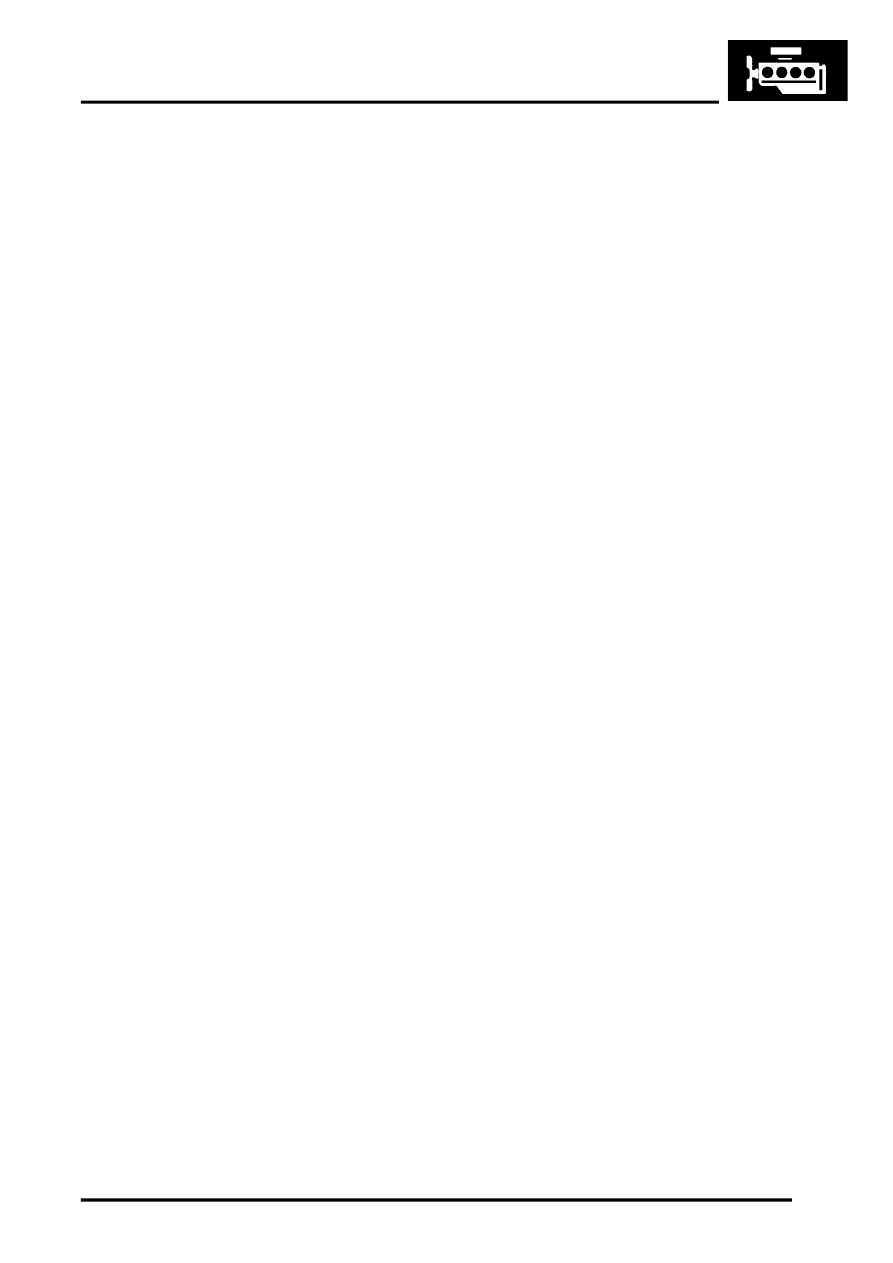Range Rover V8 Engine Cylinder Bank Components

ENGINE - V8
DESCRIPTION AND OPERATION 12-2-15
Lubrication
The lubrication system is a wet sump, pressure fed type. It lubricates the engine sliding surfaces, dissipates heat and
absorbs fuel combustion residue.
Operation
Oil from the sump is drawn up through a fabricated metal pick-up pipe which contains a mesh to filter out any relatively
large particles of material which could cause damage to the oil pump. The head of the pick-up is centrally immersed
in the sump oil which is delivered to the rotor pump.
Variable Camshaft Control (VCC)
The V8 engine uses a VCC (Variable Camshaft Control) system for valve timing on the intake camshaft. While the
engine is running the inlet camshafts are continuously adjusted to their optimum position.
Both camshafts are simultaneously adjusted to a maximum of 20
°
of the crankshaft rotational axis. This equates to a
maximum span of 40
°
crankshaft rotation.
ENGINE MANAGEMENT SYSTEM – V8, DESCRIPTION AND OPERATION, VCC System.
Cylinder Bank Components
Each cylinder bank contains the following:
l
Cylinder head with oil ports for the VCC system
l
Control solenoid valve
l
VCC Transmission and sprockets
l
Oil distribution flanges
l
Oil check valve
l
Camshaft position impulse wheels
l
Camshaft position sensors.
Control Solenoid Valve
The control solenoid valve is fitted with an integral non-return valve and has four ports:
1 Input supply port — engine oil pressure
2 Output retard port — to rear of piston/helical gear (retarded camshaft position)
3 Output advance port — to rear of piston/helical gear (advanced camshaft position)
4 Vent — released oil pressure.
The non-return valve is fitted to the rear of the solenoid valve in the cylinder head oil gallery. The non-return valve
maintains an oil supply in the VCC transmission and oil circuits after the engine is switched off. This prevents piston
movement when the engine is restarted.
ENGINE MANAGEMENT SYSTEM – V8, DESCRIPTION AND OPERATION, VCC System.
VCC Transmission and Sprockets
The primary and secondary timing chain sprockets are integrated with the self-contained VCC transmission.
The controlled adjustment of the camshaft occurs inside the “transmission”. Controlled oil pressure moves the piston
axially.
The helical gear cut of the piston acts on the helical gears on the inside surface of the transmission and rotates the
camshaft to the specific advanced or retarded angle position.
Three electrical pin contacts are located on the front surface to verify the default maximum retard position using an
ohmmeter. This is required during assembly and adjustment.
Oil Distribution Flanges
The oil distribution flanges are bolted to the front surface of each cylinder head. They provide a mounting location for
the VCC solenoids as well as the advance-retard oil ports from the solenoids to the intake camshafts.
Camshafts
Each intake camshaft has two oil ports separated by three sealing rings on their forward ends. The ports direct
pressurized oil from the oil distribution flange to the inner workings of the VCC transmission. Each camshaft has left-
hand threaded bores in their centres for the attachment of the timing chain sprockets on the exhaust cams and the
VCC transmissions for each intake camshaft.
